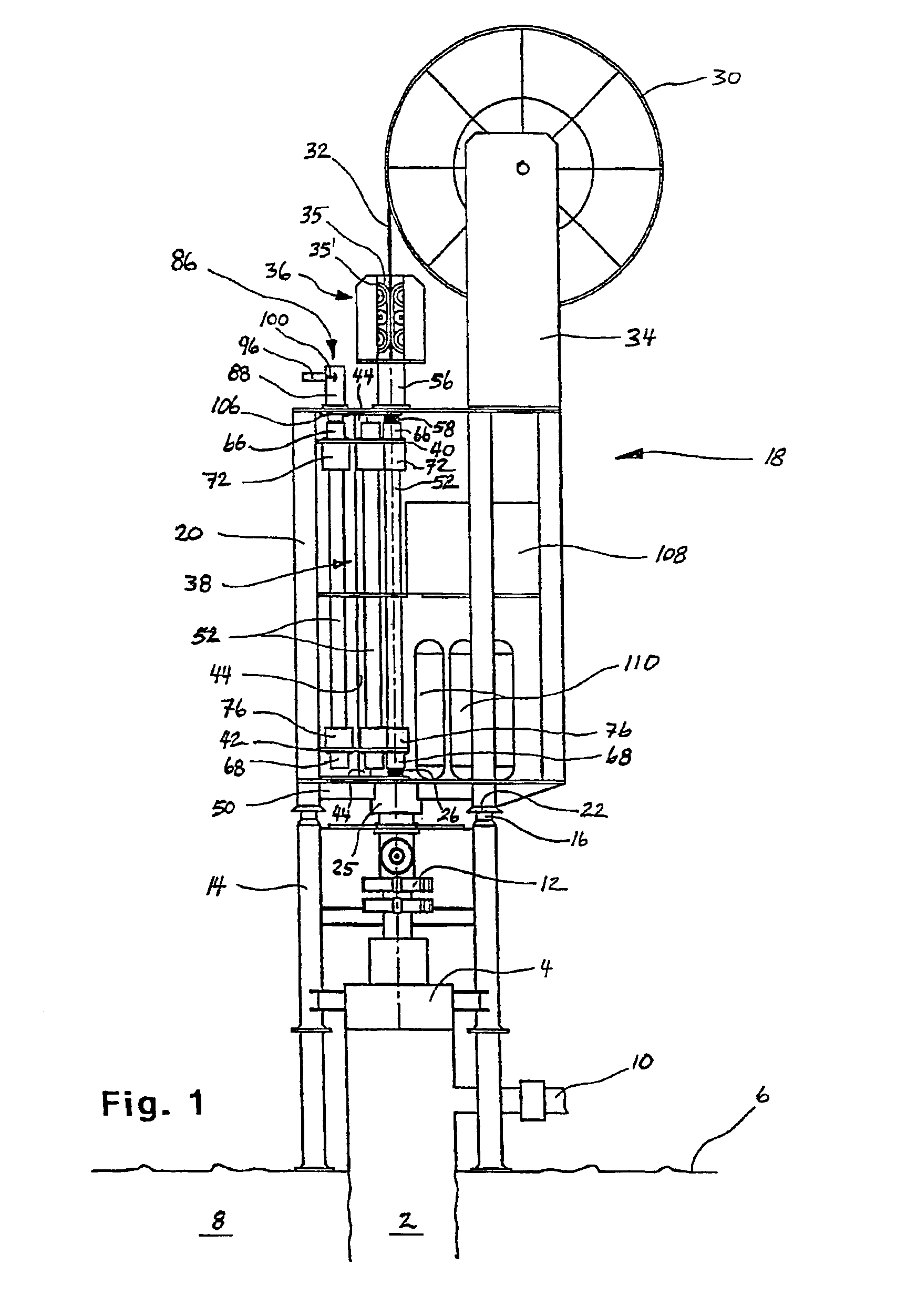Intervention module for a well
a well and frame technology, applied in the direction of drilling pipes, wellbore/well accessories, sealing/packing, etc., can solve the problems of increasing contracting costs, high hiring and use costs of mobile/floating drilling devices, and facilitating etc., to achieve less comprehensive technical equipment, facilitate the insertion or extraction of intervention tools, and reduce the effect of siz
- Summary
- Abstract
- Description
- Claims
- Application Information
AI Technical Summary
Benefits of technology
Problems solved by technology
Method used
Image
Examples
Embodiment Construction
[0043]FIG. 1 shows a subsea well 2 extending from a wellhead 4 disposed on an ocean floor 6 into the underground 8. The wellhead 4 has a production line 10 and an above-lying BOP 12 connected thereto. The subsea well 2 is moreover subjected to formation pressure. Externally the wellhead 4, possibly the BOP 12, is formed with a module receiving frame 14 which is provided with four guide poles 16. An intervention module 18 according to the invention is shown placed on top of the module receiving frame 14, the intervention module 18 being formed, i.a., by a module frame 20 provided with four guide shoes 22 at its lower end, matching the guide poles 16 of the module receiving frame 14 when being assembled. Moreover, the wellhead 4 and the BOP 12 are formed with a through well bore 24, which is arranged to be connected at its upper end in a pressure-sealing manner to a hydraulic well coupling sleeve 25 arranged to the lower portion of the module frame 20, cf. FIG. 16. At its upper portio...
PUM
 Login to View More
Login to View More Abstract
Description
Claims
Application Information
 Login to View More
Login to View More - R&D
- Intellectual Property
- Life Sciences
- Materials
- Tech Scout
- Unparalleled Data Quality
- Higher Quality Content
- 60% Fewer Hallucinations
Browse by: Latest US Patents, China's latest patents, Technical Efficacy Thesaurus, Application Domain, Technology Topic, Popular Technical Reports.
© 2025 PatSnap. All rights reserved.Legal|Privacy policy|Modern Slavery Act Transparency Statement|Sitemap|About US| Contact US: help@patsnap.com



